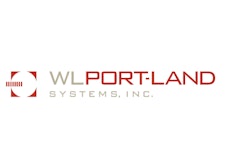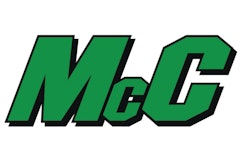A greater demand for specialty feeds is driving a change in how feed mills are designed today. As such, commercial facilities tend to be larger, with many of the industry’s top engineering/build/design firms noting trends that also add to their complexity while providing the ability to better accommodate formulation flexibility and pathogen control while preventing cross contamination … all within an environment that satisfies requirements of FDA’s Food Safety Modernization Act (FSMA).
Customization is also on the rise, said Gerry Leukam, vice president, design services-industrial, Weitz. “There is a movement back toward custom-designed feed mills, rather than just dusting off a past concept and recycling it,” he said. “There is a lot to be said for, ‘if it is not broken, don’t change it,’ but in today’s hardhitting business market, every edge one company can get is the difference between thriving vs. surviving. Most times, paying the least capital amount for a feed mill will net the highest operating cost.”
Doug Rohkohl, associate/senior designer, VAA, also sees mill owners more willing to make initial expenditures for long-term advantages. “For many years it was about the bottom dollar,” he said. “Now more people are willing to take a look at long-term operating expenses, rather than just immediate cost. They are more willing to add equipment that might cost more upfront, but will offer savings in the long term. The benefit is that for the life of the mill they will be spending less money.”
Increased mill size is one area where mill owners can see a longterm payback. That growth can be attributed to a number of factors, including a desire to boost production capabilities as well as storage/receiving capacity to take advantage of bulk purchasing that is increasingly accomplished via rail. Consolidation also plays a role in some locations.
“Part of the overall size increase has to do with infrastructure and logistics of getting product into a mill,” said Steve Schmitt, senior vice president, T.E. Ibberson. “When you start talking about reducing costs, we see people wanting greater flexibility that comes with shuttle rail operations and efficiencies of large ingredient buys. Ultimately, they need storage for large volumes of ingredients.”
Clint Steele, vice president marketing/estimating, Todd & Sargent, sees a desire to increase production capability influencing mill size. In the past four years, the company has engineered and constructed three poultry feed mills, each capable of producing 12,000, 15,000 and 25,000 tons of feed/week. All three rely on rail service to deliver “unit trains” of ingredients. To accommodate the influx of large ingredient volumes, all have turned to “outside” soybean meal storage, i.e., storage that is exterior to the mill batching/ingredient tower. “With these mills consuming 2,400 to 2,500 tons of soymeal/week, this outside storage represents a very cost-effective solution,” he said.
Tim Lease, president, WL Port-Land Systems, has also noticed a trend toward outside storage to accommodate possible rail delivery.
“In the past, we would typically design around two to three days of production in terms of soybean meal storage,” said Lease. “Now, we’re seeing more and more interest in increasing the amount of soybean meal storage to potentially allow for receipt of railcar multiples. This typically requires storage silos outside the mill tower. These silos can be set up to either batch directly out of, or to transfer out of into a limited number of work bins in the mill tower.”
For some companies a consolidation of smaller, older, regional mills into one centralized location accounts for growth in size. “The benefit is cost savings since it can be a lot cheaper on a cost-per-ton basis to produce feed in a single location, especially in the area of asset utilization and overhead where costs in multiple facilities can add up,” said Dave Utzinger, director of business development, McCormick Construction.
Utzinger also notes that older mills are likely outdated, particularly in the area of automation, which can further the desire for closure. “They may not have safeguards in place to segregate feed or track ingredients, etc.,” he said. “With the new FSMA rules coming into play, it can be a good time for companies to consolidate into a modern facility that is easier to take care of and less costly to operate.”
Accommodating formulation flexibility
Mill complexity is also a trend noted by several firms, due in part to the need to accommodate for formulation flexibility, which has become more important given the demand for more organic and GMO-free feeds as well those that are antibiotic-free. The ability to manufacture these feeds, oftentimes in the same mill as conventional feeds, requires new approaches to prevent cross contamination issues.
"Producing organic feeds adds a new twist,” said Utzinger. “We do have some mills that are seeing more demand for organic feeds so we have to come up with ways to design mills that offer complete, 100% segregation of ingredients and finished feed. If someone is trying to do that in a facility that also produces nonorganic feeds, they will need a lot of space. In some cases, building another mill is the only answer.”
At the very least, it requires a host of additional equipment, notes Lease, including selected ingredient bins and scales dedicated for meat and bone byproducts for conventional feeds, adequate ingredient bins to allow for alternate ingredients, dual mixers and downstream conveyance, attention to cleanout and adequate system capacities to allow for lost time or lost efficiency with the potential increased sequencing and flushing protocol.
Segregation — especially when using certain ingredients such as ionophores, ruminant feed additives and drugs — has become a common approach that also satisfies FSMA rules, said Rohkohl. This method often utilizes a second mixer, one dedicated to drug-free formulations and another for those with additives. “Essentially everything from the mixer through load-out will have separate lines,” he said. “Each will have its own pellet mill, transportation equipment, screeners, etc. There is no chance for mixing anything.”
Some mills are also turning this into a selling point, he adds. “The feed business is tough, and there are a lot of mills making feed,” Rohkohl continues. “Successful ones do a lot of things to make customers happy, and segregation is one of them. It’s all about giving people more options.”
An important design objective is to provide formulation flexibility at a reasonable cost, notes Dick Kobetz, P.E., president, Sunfield Engineering. “Optimizing the number and size of mill bins and fitting some of these bins with two types of feeders enables the bins to be utilized to store ingredients with different characteristics and ensure the speed and accuracy of the process,” he said. “Similarly, microingredient systems and bulk bag transfer stations provide flexibility by expanding the number of ingredients that can be handled without a ‘fixed’ bin, thereby offering speed, accuracy and the elimination of hand-adds at the mixer.”
For Leukum, formulation flexibility isn’t one magic remedy, but rather a series of small, effective solutions. “The system starts with having the ability to put the right ingredient in the right bin,” he said. “Material has to flow, without bridging, out of the bin into a dosing device that can speedily charge the scale while being able to have a concise cutoff. a scale has to be structurally sound, with quality load cells, have the ability to completely clean out and be properly intervened to the mixer and surge hopper. The end goal is having scaling systems (major, minor and micro scales) that the formulator and batch operator can trust to accurately batch feed ingredients without having to over formulate ingredients, especially the most expensive ingredients.”
Design for pathogen control
Designing pathogen control into mills today can also add complexity. Leukam notes that the first step in designing any food safety into a mill is to thoroughly embrace FSMA, rather than fight it. “It is comprised of many common-sense principles that most feed millers adhere to already in their everyday practices,” he said.
There are many features to consider, adds Lease. “Certainly, there are more options with a new mill, but many still apply to an existing facility,” he said. Features he cites include separating “clean” and “dirty” areas using physical barriers or space, enclosing “clean” areas with filtered pressurization, ensuring adequate heat processing, facilitating housekeeping and equipment cleanout and sealing or covering porous surfaces. Using feed additives like mold inhibitors and antimicrobial preservatives is also being done.
Utzinger has seen some companies remove traditional trouble makers like meat and bone meal from formulations altogether, while Schmitt sees clients using isolated rooms and processes for specialty formulations. Rohkohl has also noticed a trend toward segregation where mixing and ingredient storage are separated from pelleting by a dividing wall.
Ultimately, pathogen control boils down to management and good housekeeping, adds Kobetz. “It is possible to select equipment and design a facility for pathogen control and the prevention of cross contamination,” he said. “However, none of these measures ensures pathogen-free feed without strict process management and housekeeping from ingredient receipt through loadout and delivery.”
Material selection … concrete vs. steel
Material selection also plays a role, and most experts agree that concrete and steel each have their place. Choosing between metal and concrete storage depends on many factors, including cost, amount/type of storage needed and footprint/height restrictions all factoring into the decision, notes Lease.
“Unless a client has a preference,cost rules,” said Kobetz. “Slip-form concrete plants offer an economy of scale with respect to height while smaller feed manufacturing plants are generally less expensive when constructed from prefabricated metal bins with future storage augmented, economically, with the addition of round, corrugated steel bins. There really is no ‘better’ as each structure can be detailed to store and handle a range of ingredient characteristics. The choice just comes down to cost.”
Leukam supports concrete and engineered structural steel, noting there is a life expectancy difference. Concrete buildings can last 50 to 60 years or more, whereas life expectancy for steel structures is typically just 20 to 25, due in large part to the salt used in formulations. “If you do choose steel, make sure there are no right-angle corners where feed can hang up, creating a potential cross-contamination issue,” he advises. “Choose bins with smooth walls as well.”
Rohkohl sees a market for both materials as well, however, noting that concrete is typically a more sanitary choice. “Concrete is a solid mass with a flat surface,” he said. “There are no ledges for dust to settle, and no internal cavities for insects and pests to hide.”
However, there are plenty of ways to make steel mills more sanitary, he adds, noting installing interior liner panels can help conceal columns, exposed bracing, steel girts, etc., which provide places for dust to settle. “There are a lot of mills I’ve gone into that are 30 to 40 years old and are clean,” he said. “They are checking seals, sweeping, cleaning walls, etc. I have also been to mills that are 5 to 10 years old that don’t have a good housekeeping plan in place. Maintaining emission points and adding dust containment systems can help, but dust floats and settles, and there are dangers that come with accumulated dust. You may not know what’s in dust, potentially leading to a contamination issue. But the bigger issue can be explosions, propagated by built up-dust.”
Cleanliness is one reason why Utzinger encourages clients to consider concrete. “It’s easier to keep clean and lasts longer,” he said. “With steel structures you end up with steel walls and exposed beams, and sometimes insulated panels. Once insects and rodents get into those areas, it’s very difficult to get them out. With concrete, you end up with smooth walls and no place for them to hide.”
Schmitt often sees a hybrid of concrete mixed with steel. “Concrete prices are going up a bit, while steel prices are slightly down,” he said. “That sweet spot moves around a bit so I don’t see any ‘automatics’ for bulk storage. For raw storage, I do see a trend toward steel tanks because of the initial capital cost, size and flexibility that steel bin manufacturers continue to push toward.”
Because microingredients tend to be hydroscopic, special storage considerations need to be taken. “Ideally, they should be stored in air-conditioned spaces,” said Leukam, noting they can easily absorb moisture, making them difficult to use. “Bags should be opened and contents dispensed in a moisture-controlled room. To meet energy codes, air-conditioned spaces need to be in an insulated room, with insulated walls and ceilings being free of ‘bug’ spaces.”


















